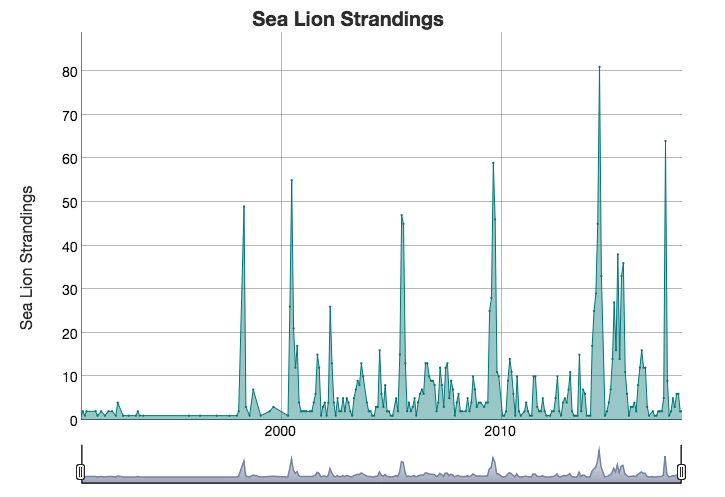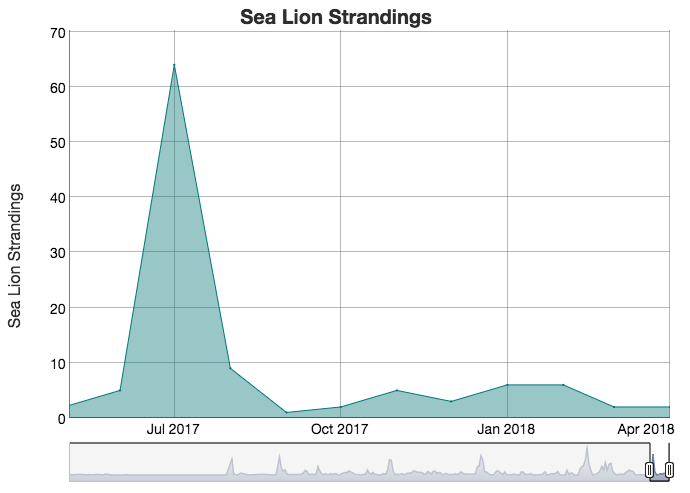The probability of a Pseudo-nitzschia bloom for the month of May was high all along the coast. Probabilities were low in most of the Southern California Bight once you move south of the Santa Barbara Channel, with high but most likely spurious probabilities of a Pseudo-nitzschia bloom in the very nearshore where C-HARM is known to be less accurate. The only location where the Harmful Algal Bloom Monitoring and Alert Program (HABMAP) pier sampling by SCCOOS and CeNCOOS showed high potential for a toxigenic Pseudo-nitzschia (large "seriata" size class) bloom was at the Cal Poly Pier in early May.
C-HARM predicted the highest likelihood of domoic acid production in the Southern CA Bight, the offshore region of central CA, and in the nearshore zone of the North Coast. The CA Dept. of Public Health has issued a sport-harvested razor clam advisory for the North Coast (Del Norte and Humboldt Counties). Marine mammal stranding data from The Marine Mammal Center (TMMC) in central CA posted that most strandings were due to malnutrition and illness rather than domoic acid toxicity in May, just as they were in the month of April. This suggests that domoic acid is either not high in the central CA offshore ecosystem (in contrast to C-HARM predictions) OR that there is a delay in domoic acid toxicosis cases arriving at TMMC. This situation is TBD. Interestingly, the CA Dept. of Public Health just lifted advisories on sport-harvested whole scallops and clams in Ventura and Marin Counties where shellfish were previously at high risk of spreading Paralytic Shellfish Poisoning. These advisories are still in effect in Santa Barbara, Santa Cruz, and Sonoma Counties!
Mean Probability of Pseudo-nitzschia Bloom for May 2018
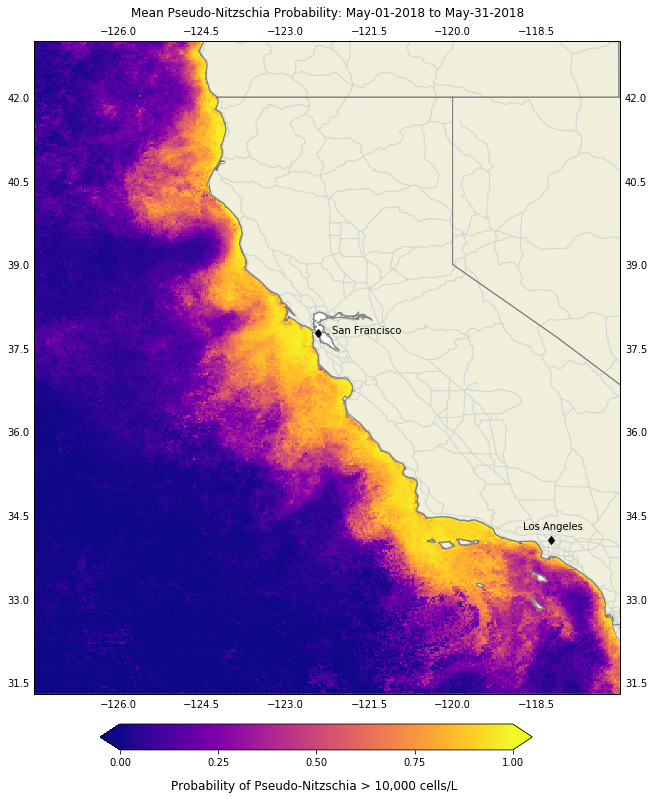
Mean Probability of a Particulate Domoic Acid Event for May 2018
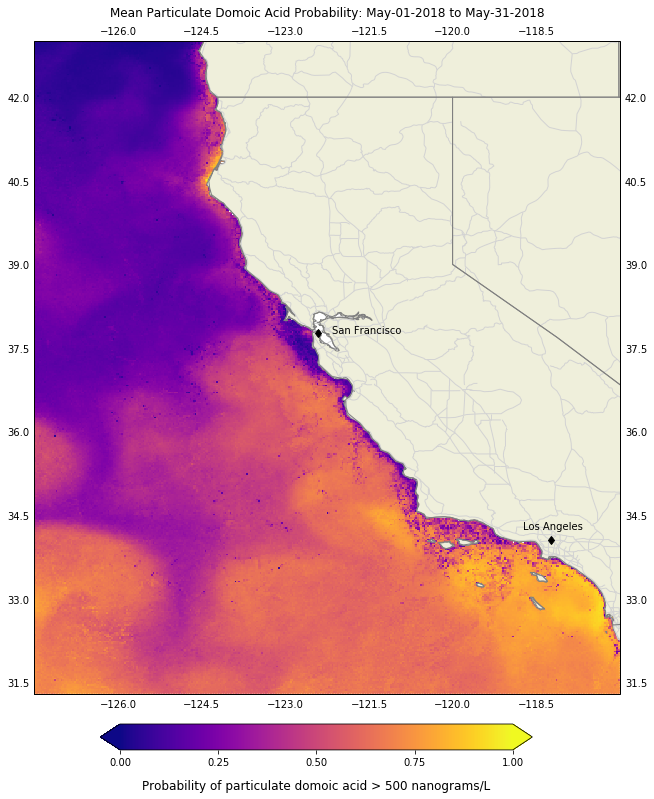
Mean Probability of a Cellular Domoic Acid Event for May 2018
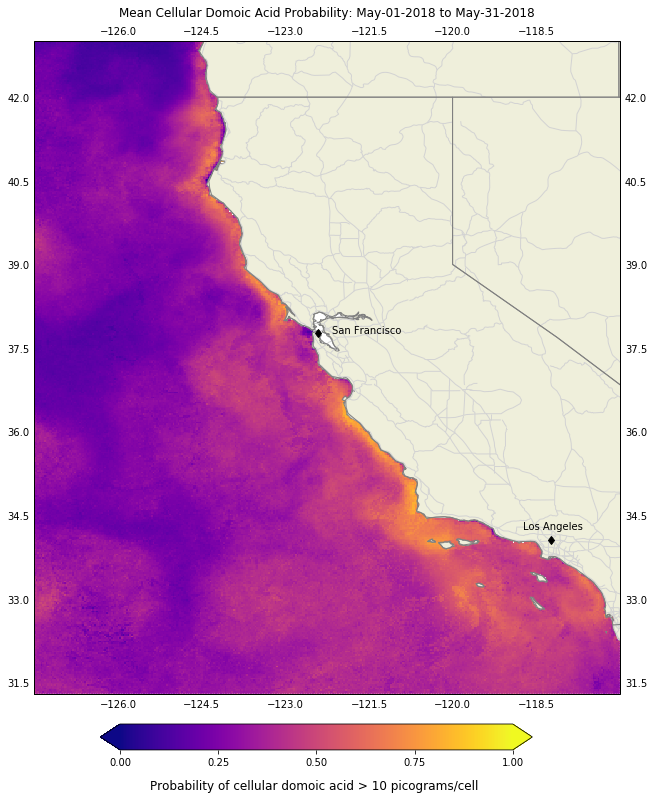
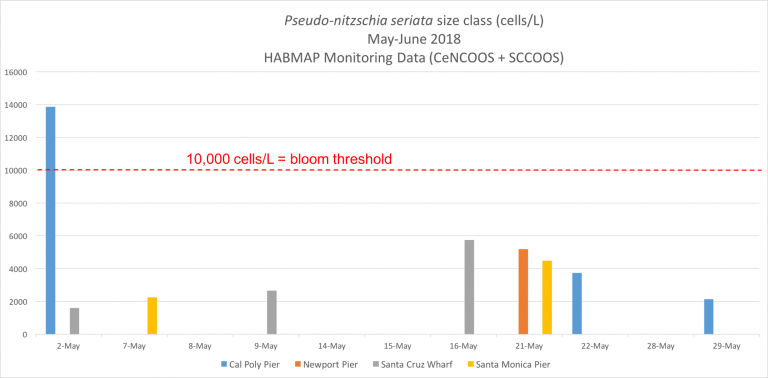
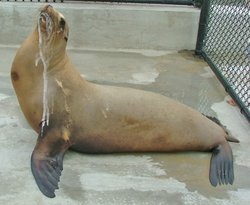
Sea Lion Stranding’s Visualized Through Time and Space
Domoic acid (DA) is a marine biotoxin produced by some diatom species of the genus Pseudo-nitzschia that appear to be becoming more frequent along the West Coast of the United States. California sea lions (Zalophus californianus) exposed to DA may develop severe neurological signs (e.g., epilepsy) and lesions (e.g., neuronal necrosis in the hippocampus) and cause sea lions to strand.
Location of sea lion strandings associated with DA toxicosis can provide insight into the location of DA-producing blooms, and highlight areas for more intensive water sampling to monitor these blooms.
Click here to view an interactive map of The Marine Mammal Center sea lion strandings through space and time using ArcGIS online.
You can also view an interactive time series of The Marine Mammal Center sea lion stranding data from December 1990 to present.

